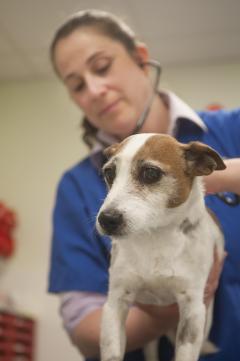The role of IL34 in the pathogenesis of canine atopic dermatitis
Heading towards a new treatment for canine atopic dermatitis.

Canine atopic dermatitis (AD) is a common, genetically predisposed, inflammatory and pruritic allergic skin disease thought to affect up to 10% of dogs world-wide. It is a complex and multifactorial disease with characteristic clinical features associated with IgE antibodies most commonly directed against environmental antigens. Treatment options for dogs with atopic dermatitis are aimed at reducing the inflammation and pruritus using either systemic therapy or topical therapy or combinations of both, as well as addressing the skin barrier and reducing and preventing secondary infections. None of the current treatment options address the underlying likely pathology, but suppress the inflammation associated with the disease.
The pathogenesis of canine AD is not fully understood, but it is likely to be associated with dysregulation of cytokine production leading to activation of Th1 cells, Th2 cells, Langerhans cells (LC) and monocytes. Since IL34 plays a critical role in LC development, it could be instrumental in canine AD via LC proliferation and T cell activation. Debbie Gow is investigating this relationship and if this proves to be the case, plans to develop targeted anti-IL34 therapy to block LC activation and subsequent inflammation, helping to ameliorate this common condition.

